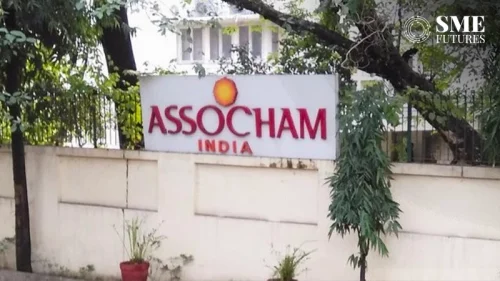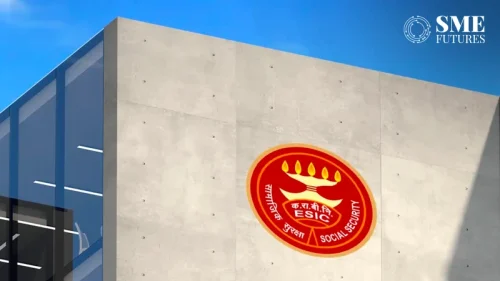In an exclusive interview with SME Futures, Sandeep Varma, CEO of the Credit Guarantee Fund Trust for Micro and Small Enterprises (CGTMSE), gives clarity on the latest credit guarantee scheme for manufacturing MSMEs announced in the Union Budget 2024. He also shares the remarkable journey of the organisation since its inception in 2000. Under Varma’s leadership, CGTMSE has navigated numerous challenges and milestones, continually evolving to empower MSEs across India. From providing collateral-free credit guarantees to introducing innovative schemes and leveraging digital transformation, CGTMSE is playing a pivotal role in promoting entrepreneurship, financial inclusion, and economic growth.
Here are the edited excerpts:
Can you share the journey of CGTMSE since its inception? What have been the key milestones along the way?
The journey of the Credit Guarantee Fund Trust for Micro and Small Enterprises (CGTMSE) since its inception in 2000 has been quite remarkable. The CGTMSE was set up by the Ministry of MSME, the Government of India and SIDBI with the aim of providing credit guarantees to financial institutions, enabling them to offer loans to MSEs without the need for collateral. This initiative has played a pivotal role in promoting entrepreneurship and financial inclusion across the country. One of the key milestones in our journey was the launch itself, which marked the beginning of a new era in credit access for MSEs.
Initially, we faced challenges in creating awareness and building trust among financial institutions and MSEs. However, through continuous efforts in outreach and education, we were able to establish a robust network of Member Lending Institutions (MLIs). A series of policy modifications were introduced in 2018 which helped the CGTMSE expand its business horizon. For the last 3-4 years, we have been taking continuous steps towards reforming the schemes, both at the policy and the operational level.
A significant milestone was the introduction of the revamped Credit Guarantee Scheme (CGS) in 2023, which included several enhancements to make the scheme more attractive and beneficial for both lenders and borrowers. This included increasing the credit guarantee coverage and simplifying the claim settlement process. Concurrently, a total revamp of the technological platform occurred, in which entire operations are carried out, ensuring ease of business for lending institutions. And last year, we celebrated the milestone of supporting and guaranteeing more than ₹2 lakh crore worth of MSEs which is equivalent to one-third of the total guarantees approved since the inception of CGTMSE. Throughout, our mission has been to empower MSEs and drive economic growth.
What were some of the key initiatives implemented during the last 3 financial years that significantly contributed to this milestone?
Over the last 3 financial years, the CGTMSE has implemented several key initiatives that have significantly contributed to our recent milestones. We increased the guarantee ceiling to ₹5 crores and reduced the Annual Guarantee Fee (AGF). We’ve aligned trading activity with others and raised the waiver of the legal action threshold to ₹10 lakhs. To better serve our borrowers, we provided concessions in fees and increased the extent of coverage for various borrower categories.
We’ve also collaborated extensively with various state governments to provide enhanced guarantee coverage to MSEs in their respective states. We achieved API integration with major banks for the automatic flow of applications and introduced auto approval of guarantee applications. Additionally, we reduced the lock-in period for loans of up to ₹10 lakhs with a tenure of up to 36 months. Special provisions have been made for MSE borrowers in Identified Credit Deficient Districts (ICDDs) by the RBI, who receive a 10% reduction in the standard rate of the guarantee fee and an additional 5% guarantee coverage. Moreover, we’ve included Informal Micro Enterprises (IME) in the guarantee mechanism, further expanding our support to MSEs.
The recent budget proposal includes a credit guarantee of up to ₹100 crores for MSMEs to purchase machinery and equipment without collateral. Can you provide detailed insights into how this scheme will be rolled out and what criteria will be used to select eligible MSMEs? Also, give us clarity on how it’s a self-financing scheme.
The recent budget proposal includes a substantial credit guarantee of up to ₹100 crores for MSMEs to purchase machinery and equipment without the need for collateral. This scheme will be rolled out in collaboration with financial institutions that will extend the credit based on the Credit Guarantee Scheme. Eligible MSMEs are likely to be selected based on their creditworthiness, business viability and adherence to predefined criteria, such as financial performance and operational history, mainly as per the prescribed guidelines by the RBI which the lending institutions have to follow. It is important to note that the details of the scheme are yet to be received.
However, from the announcement it appears to be a self-financing scheme, meaning that the funds generated through guarantee fees and interest earned on the corpus income will sustain it, ensuring its long-term viability without additional government funding. This initiative is designed to empower MSMEs by providing easier access to necessary capital, thereby fostering growth and innovation in the sector.
With the proposed development of new credit assessment models based on the digital footprints of MSMEs, how will CGTMSE ensure that these models are robust, inclusive, and free from biases that might disadvantage smaller or less tech-savvy businesses?
With the development of new credit assessment models based on the digital footprints of MSMEs, the CGTMSE is committed to ensuring that these models are robust, inclusive, and free from biases. We have already made a provision for cash-flow-based lending in our model. The CGTMSE relies on the established processes of MLIs, and we fully depend on their due diligence when sanctioning credit facilities for a particular MSE. Regardless, the CGTMSE tries to implement techniques in its system to create comprehensive and fair assessment criteria. Our goal is to create an equitable credit assessment system that benefits all MSEs. We have, also, integrated with the OCEN and other LSPs to become an integral part of the entire digital credit journey.
The budget also proposes credit support to MSMEs during stress periods. Can you elaborate on the mechanisms that will be put in place to ensure timely and adequate support to MSMEs during such times?
The budget’s proposal for credit support to MSMEs during stress periods will ensure timely help to borrowers to meet the challenges and prevent slippage into NPA. The details are yet to come through.
Beyond this credit guarantee scheme, what other initiatives are in the pipeline at CGTMSE to further support the growth and development of MSMEs in India?
Beyond the CGS, CGTMSE has several initiatives in the pipeline to further support the growth and development of MSMEs in India. One significant initiative is the Special Guarantee Scheme NTC-IME (NIRMAN), aimed at new-to-credit Informal Micro Enterprises (IME). We desire to make this a Credit Plus scheme. We also plan to design schemes for invoice financing, a special scheme for MFIs.
How does CGTMSE plan to evolve its support mechanisms in response to the changing economic landscape?
We’re a very nimble-footed organisation. We plan to evolve its support mechanisms in response to the changing economic landscape by embracing digital transformation and leveraging technology to streamline processes. We are enhancing our digital platforms to facilitate quicker and more efficient access to credit guarantees for MSEs. Additionally, we are focusing on developing innovative credit assessment models that utilize digital footprints, ensuring inclusivity and robustness. We are also expanding collaborations with fintech companies and financial institutions to offer tailored financial products that meet the evolving needs of MSEs.
How can MSMEs avoid due diligence, when proceeding with CGTMSE initiatives?
MSEs cannot and should not avoid due diligence when proceeding with CGTMSE initiatives, as it’s a crucial step in ensuring financial support which is directed towards viable enterprises. However, to streamline the process, MSEs should maintain accurate documentation, adopt digital tools for financial management and ensure compliance with regulatory requirements. Additionally, having a well-prepared business plan & engaging with advisors and mentors can help make the due diligence process more efficient and smoother.
What is the biggest challenge going ahead, considering the economic landscape?
Going forward, the biggest challenge, considering the economic landscape, is maintaining the resilience of MSMEs amidst global economic uncertainties. Adapting to rapid technological changes, managing supply chain disruptions and ensuring access to timely and adequate credit are critical. And this is where the CGTMSE will play a very important role. The crease that the CGTMSE is looking to iron out is how it will align its operations with the ever-evolving landscape of MSME credit. Further, AI- and ML-based portfolio management and the use of data analytics to develop new products to ensure that the CGTMSE remains a critical player and a force multiplier in the area of credit to MSMEs, would be critical.











